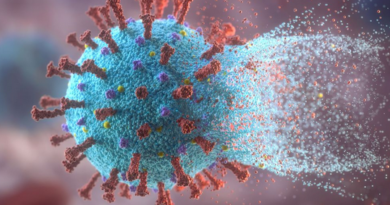Actions taken in Switzerland -an overview
Origins
The Coronavirus virus family has existed for a long time and involves many types of viruses causing respiratory diseases in mammals and birds. The first report of the effects date back to 1920 when chickens exhibited repsiratory problems in North America. The covid-19 outbreak is thought to have been transported to an animal market in the city of Wuhan, China, through a carrier animal of uncertain origin (pangolin, bat, snake) before propagating to many unsuspecting people. Before long, the first cases of Covid-19 were recorded in November 2019 in Wuhan. The first time it was recognized as a fast-spreading virus endangering the world and communicated as such in the world news was only in February.
1st wave encounter
The first confirmed case in Switzerland was on the 24th February. In such circumstances, the situation was classified as “particular circumstances” regarding the law on epidemics, and the was given the power of decision-making on a National scale. Their first decisions at the end of February was to ban any events regrouping more than 1000 participants. Cantons started signaling their first positive cases of Covid-19, which led to extra measures being taken to protect vulnerable people. The border with Italy was still open to people coming to work in Switzerland.
The months of March and April will come to be the months with the highest number of cases recorded in the first wave. Adequate testing and safety equipment was still scarce and the Swiss government was looking to stock up as fast as possible, as the situation was extremly urgent. The biggest factories are in China, and with all European countries looking to get the same materials, it was a race to make deals with the Chinese government. Transport aircraft were sent to Shangai to bring back large quantities of medical materials. Some regions were particularly hit by the virus, for example Ticino, Vaud and Geneva. As cases were still on the rise (3’600 total cases), the Council ordered new measures on the 13th March restricting the number of people in public spaces (manifestations, restaurants, night clubs), and closing schools. Financial help was also proposed to try and diminish the impact on the economy throughout the crisis. On the 16th March, with confirmed cases on a rapid rise, the situation was escalated to “extraordinary circumstances”. Restaurants, bars and other public recreational spaces were shut down with the exception of health institutions and food shops. The army was called upon to help as a support for the overwhelmed medical services and controls were enforced at the borders limiting entry onto Swiss soil for people coming from at-risk countries. On the 20th March, the Council announced that the maximum number of people in a get-together was 5, introducing a state of semi-lockdown. The government kept a level of freedom for their citizens whilst trying to enforce public distancing rules in public places.
In mid-April, admissions into hospitals and detected cases were dropping, meaning that the peak of the first wave had passed. From the 11th May onward, restrictions were slowly dropped as the number of cases had diminished since mid-April and had stabilized since. Switzerland was one of the most hit countries throughout the first wave with a grand total of around 30’000 total confirmed cases and around 1700 deaths.

Calm before the storm and 2nd wave surge
The months of May to mid-July was a short period of coronavirus tranquility, a breath of fresh air, with a low number of infections, life was getting back to normal. Masks were made mandatory again on public transport from the 6th of July onwards, mostly as a precaution and not because cases started skyrocketing again. The situation was increased to “particular circumstance”, and not “extraordinary circumstance” like the first wave. The Cantons therefore have more freedom regarding the measures to be taken and if cases are particularly high, the Canton Council can autonomously decide on measures. Hoping to contain the second wave without the use of a semi-lockdown, some Cantons reinforced their protective measures. With an alarming increase from 500 cases a day to 5’000 between the start to mid-October, only on the 19th October did the government announce measures such as the mask being compulsory in closed public spaces and near public transport, and gatherings up to 15 people maximum. Ten days later with Covid cases on an exponential rise, announcements of more strict measures were given (demonstrations, restrictions for restaurants, sports events of more than 15 people closed, clubs and other recreational spaces closed).
Switzerland was considered the epicentre of Covid spreading in Europe with one of the highest infection rates in the world. The West of Switzerland was particularly hit by the second wave compared to the rest of the country. Hospitals nearing saturation in the Western Cantons, criticism of hospitals in other less hit part of the country which did not offer any help to welcome covid patients from the most hit regions arose. After Alain Berset’s speech, patients from critical situation hospitals were transferred into Swiss German hospitals. On the 1st November, the canton of Geneva even introduced a semi-lockdown because it was suffering skyrocketing infection rates, allowing only meetings in groups of 5 and restaurants could only do take-away. The peak in positive cases was in beginning of November with a daily number of nationwide infections around 8’000 on average. Switzerland is dependant on tourism, especialy winter ski tourism. Resorts were opened during the peak of infections, and an announcement at that time ordered compulsory ski masks and social distancing in queues and lifts. Some saw it as good and a way to bring people together and provide a fun day out, but other critics strongly opposed the opening of the ski resorts.
On the 9th November, Pfizner announced that the vaccine they were developping had had around 90% success rates in their trials. This was the first big announcement concerning vaccine development nearing its completion and potential application to world populations. The Swiss government has been in contact with different companies to assure the abundance of vaccines and a diversity to be able to target different groups in the population. Swissmedic is testing them, and will announce if they are effective and safe to use. In that case, administration of the vaccine may start. Since the peak of infections, cases and mortality numbers have been on a downward trend until mid-November. Since then, flattening of the infections and deaths has occured, with daily infections staying at 4’000 on avergage and deaths around 75.
References ; OFSP, WHO, RTS, Swissinfo, le Temps.
Featured image : luxuryactivist.com/




